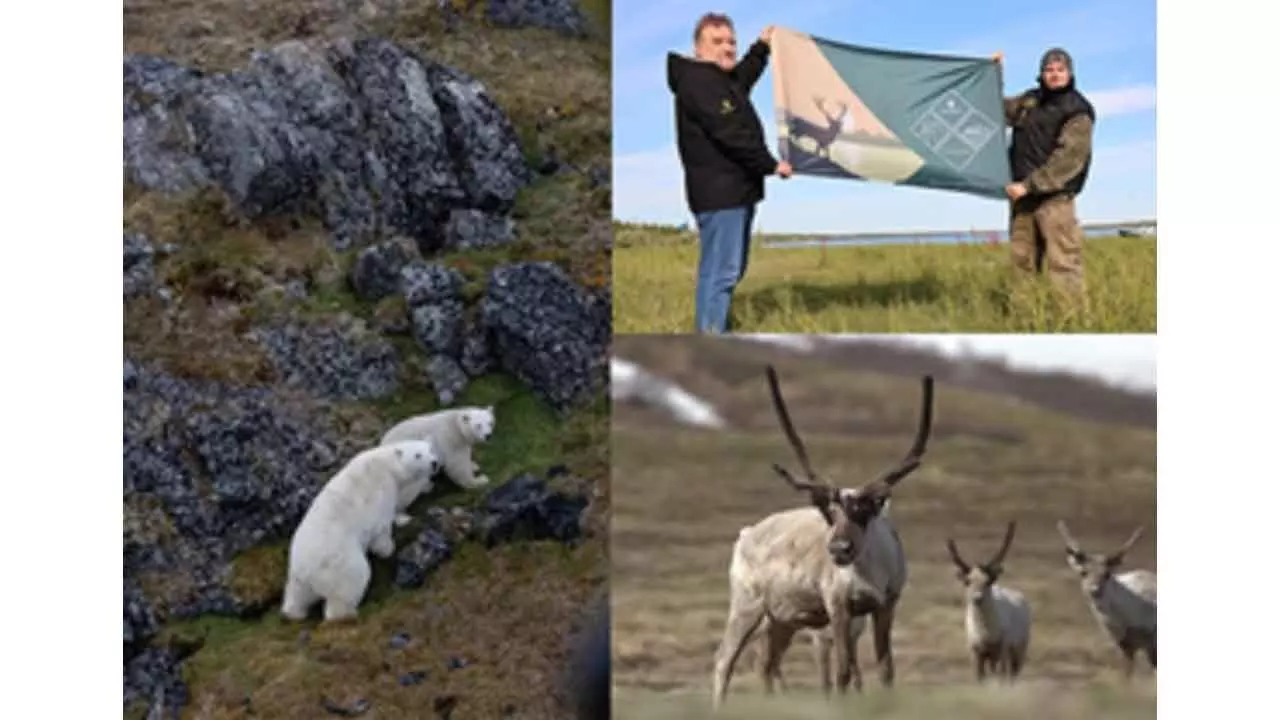Rosneft Arctic Research Team Finds Rare Birds
Takes count of polar bear, wild reindeer population
Rosneft Arctic Research Team Finds Rare Birds

Scientists from top Russian research institutes studied the Kara subpopulation of polar bears, wild reindeer, and rare species of birds in the western Taymyr Peninsula in a survey that involved flying almost 17,000 km and travelling over 3,000 km on water
New Delhi: Russian Oil Company Rosneft, which carried out five expeditions in the north of Krasnoyarsk Territory in 2024 as part of its “Tamura” corporate biodiversity conservation programme, has found 60 rare bird species and has taken count of the polar bear and wild reindeer population.
Scientists from top Russian research institutes together with specialists from Rosneft’s Arctic Research Center studied the Kara subpopulation of polar bears, wild reindeer, and rare species of birds in the western Taymyr Peninsula in a survey that involved flying almost 17,000 km and travelling over 3,000 km on water.
Researchers at the AN Severtsov Institute of Ecology and Evolution (IEE) of the Russian Academy of Sciences studied rare birds inhabiting the Brekhovskykh Islands in the Yenisey River estuary.
Amongst the 60 species recorded in this internationally significant ornithological zone were the peregrine falcon, the Brent goose, the black scoter, and the long-tailed duck, as well as Siberian chiffchaffs, redwings, and dusty thrushes.
The researchers recorded the movements of Bewick’s swans, geese, ducks, and seagulls to help clarify the size and species composition of each flock.
The IEE experts also carried out a polar bear count on the northwestern shore of Taymyr and the Kara Sea islands during the ice-free period, recording a total of 50 individuals.
To monitor the animals’ seasonal migration and activity, and to study their maternity dens and feeding grounds, transmitters with satellite radio tags were attached to several individuals -- not only females but also, for the first time in Russian practice, males.
One of the tasks facing the team in 2025 is to carry out Russia’s first full-scale aerial census of the Kara subpopulation of the polar bear.
As part of the “Tamura” programme, Rosneft jointly with the Siberian Federal University has continued its multi-year study of the wild reindeer
population. This year, they travelled more than 1,000 km along the Pyasina River and its major tributaries and carried out aerial observations over an area of 360,000 square kilometres. On Sibiryakov Island a group of at least 100 reindeer was found, and a unique case of a reindeer swimming across 12 km of water was also recorded. During the expedition, reindeer were tagged with satellite transmitters for remote monitoring of their population.The researchers also announced a new four-year Tamura research programme to update information on the status of the region’s key animal species.

